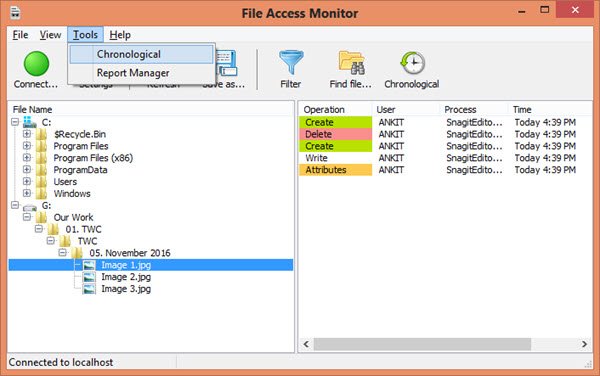

Secure email, documents, and sensitive data that you share outside your company. Protect files and emails across multiple devices. Receive intelligent security analytics and threat intelligence across the enterprise.ĭefend against distributed denial of service (DDoS) attacks. Use the native security information event management (SIEM) and security orchestration automated response (SOAR) solution on Azure. Get a unified view into the infrastructure and resources provisioned for the workload. Strengthens the security posture of your data centers, and provides advanced threat protection across your workloads in the cloud (whether they're in Azure or not) and on-premises. Addressing the issues early in the operational lifecycle will strengthen your overall security posture. These tools can detect threats at different levels and report issues.
FILE MONITOR MICROSOFT UPDATE
Native reduce the effort required to integrate external security tooling and update those integrations over time.Īzure provides several monitoring tools that observe the operations and detect anomalous behavior.
FILE MONITOR MICROSOFT SOFTWARE
Whether you opt for Windows’ built-in tools, third-party software or network monitoring tools, there are plenty of options to choose from depending on your needs.The leverage native control security principle tells us to use native controls built over third-party solutions.
FILE MONITOR MICROSOFT WINDOWS
In conclusion, monitoring file and folder changes in Windows can be crucial for protecting your data and ensuring that your projects stay on track. These tools allow you to capture and analyze network traffic data, including the data generated when files and folders are accessed, created, deleted, or modified. There are several network monitoring tools available, such as Wireshark, Microsoft Message Analyzer, and NetFlow Analyzer. If you are monitoring a network folder or shared drive, you can track file and folder changes by monitoring network traffic. Some popular options include Dropbox, Google Drive, OneDrive, and Bitdefender Total Security. These programs can provide more advanced features like real-time notifications, filtering by file type, and remote monitoring. If you don’t want to use Windows’ built-in monitoring tools, several third-party software options can track file and folder changes. You can then choose which files and folders you want to monitor by right-clicking on them and selecting “Properties” > “Security” > “Advanced” > “Auditing.” From there, navigate to Security Settings > Local Policies > Audit Policy and enable the “Audit object access” option. To enable auditing, open the Local Security Policy editor by searching for it in the Start menu. This feature is available in the Professional, Enterprise, and Education editions of Windows. From here, you can choose which users and groups you want to monitor and what actions you want to track, such as creating, deleting, or modifying files.Īnother way to monitor file and folder changes is by enabling file and folder auditing. Right-click on the folder and select “Properties.” In the Properties window, click on the “Security” tab and then click on the “Advanced” button. Open File Explorer and navigate to the folder you want to monitor.

The easiest way to monitor file and folder changes in Windows is to use the built-in Windows File Explorer. In this article, we’ll explore some of the most effective methods.


 0 kommentar(er)
0 kommentar(er)
